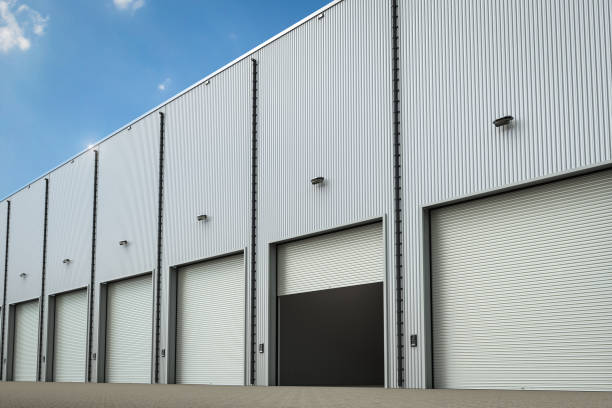How Does the Size of a Barn Affect Your Business
When it comes to running a successful business, every decision, no matter how seemingly small, can have a significant impact. The size of a barn is no exception. For businesses in agriculture, manufacturing, or storage, the dimensions of the barn can influence various aspects of operations and, consequently, the bottom line.
In this blog, we'll explore the nuanced relationship between the size of a barn and its effects on businesses. We’ll touch on economic implications, operational efficiency, scalability, regulatory considerations, and the integration of modern technology. Moreover, we'll delve into real-world examples and offer insights into making informed decisions, all while emphasizing the relevance of a 40x60 steel building in contemporary business setups.
Understanding Your Business Needs
Before breaking ground on a new barn, it's crucial to thoroughly understand your business requirements. Consider both current and future needs, assessing the purpose the barn will serve. For businesses involved in agriculture, the size of the barn must accommodate storage for equipment, livestock, and crops. For manufacturing and storage businesses, the layout should facilitate efficient workflows and provide ample space for inventory.
A 40x60 steel building, with its 40 feet width and 60 feet length, offers a versatile and expansive interior. This size is often favored for its balance between space and cost-effectiveness, making it suitable for a range of applications from agricultural storage to small-scale manufacturing.
Economic Implications of Barn Size
The economic aspect of choosing the right barn size is multi-faceted. The initial investment and construction costs can vary significantly based on dimensions. A 40x60 steel building, while providing ample space, is generally more cost-effective than larger structures. Long-term maintenance expenses should also be considered, as larger barns may require more resources for upkeep.
Calculating the Return on Investment (ROI) involves balancing the upfront costs with the benefits the barn brings to your business. A properly sized barn contributes to operational efficiency, and the economic advantages realized through streamlined workflows and optimized storage can positively impact the overall ROI.
Operational Efficiency
The size of your barn directly influences daily operations and overall efficiency. A 40x60 steel building offers a spacious interior, allowing for organized storage and easy maneuverability. The layout should be designed to enhance workflow, reducing the time and effort required to complete tasks.
Consider how the barn's size affects accessibility and logistics. Can equipment and inventory be easily moved in and out? Is there enough space for employees to work comfortably? These questions are crucial in ensuring that the barn contributes to, rather than hinders, operational efficiency.
Scalability and Future Growth
Businesses are dynamic, and your barn should be able to adapt to changes. Planning for future growth is essential, and the size of the barn plays a pivotal role in this aspect. A 40x60 steel building offers a good balance of space and flexibility. It provides room for expansion without being excessively large, avoiding the risk of overbuilding, which could lead to unnecessary expenses.
Scalability also involves flexibility in design. The interior layout should be easily adaptable to changing business needs. This is where the 40x60 dimensions shine, allowing for diverse applications from storage to workspace while accommodating potential growth.
Compliance and Regulatory Considerations
Zoning and building codes must be adhered to when constructing a barn. The size of the structure can impact compliance with these regulations. A 40x60 steel building typically falls within permissible dimensions for various zoning requirements, but it's crucial to consult local authorities to ensure full compliance.
Additionally, environmental and safety regulations may vary based on the barn's purpose and size. Permits and approvals should be obtained accordingly. Choosing a size that aligns with regulatory standards is essential to avoid legal complications down the line.
Technology Integration for Optimal Utilization
In the modern business landscape, technology plays a pivotal role in optimizing operations. The size of the barn should accommodate the integration of smart farming technologies, automation, and other modern agricultural practices. A 40x60 steel building can easily house technological advancements, providing a suitable environment for the implementation of efficiency-boosting tools and systems.
Whether it's precision agriculture tools or automated inventory management systems, the barn should have the infrastructure to support these technologies. This not only enhances operational efficiency but also positions the business for future technological advancements.
Challenges in Choosing the Right Barn Size
While the advantages of a well-sized barn are evident, challenges can arise during the decision-making process. Common pitfalls include underestimating future needs, overlooking zoning regulations, or overcommitting to a size that exceeds operational requirements. Mitigating these challenges involves careful planning, consultation with experts, and a thorough understanding of the business's present and future needs.
Conclusion
Viking Manufacturing, Inc. encourages businesses to engage in a thorough assessment of their needs, considering the economic implications of the size of their structures. This strategic approach enables businesses to make informed decisions that positively impact their bottom line. With Viking Manufacturing's commitment to quality and functionality, investing in their steel buildings not only meets current requirements but also sets the stage for future growth and success. In navigating the dynamic landscape of business, the right structure becomes not just a physical space but a catalyst for progress and prosperity.

.jpg)

Comments
Post a Comment